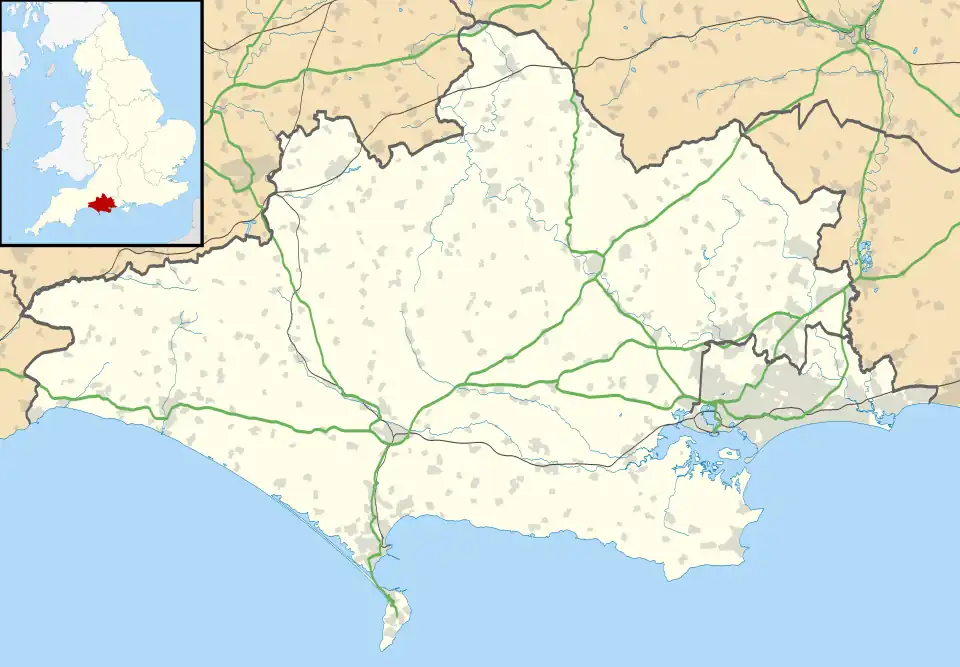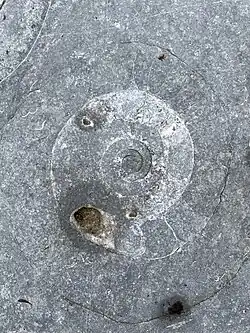Monmouth Beach, Lyme Regis
Monmouth Beach, Lyme Regis | |
|---|---|
Monmouth Beach from near the Cobb at Lyme Regis | |
 | |
| Coordinates: 50°43′06″N 2°56′54″W / 50.718227°N 2.94837°W | |
| Location | Dorset, England |
Monmouth Beach is a pebble and rock beach stretching approximately 1 mile (1.6 km) westwards from the harbour at Lyme Regis, Dorset to Pinhay Bay, East Devon. It is part of the Jurassic Coast, situated below Ware Cliffs, and includes Poker's Pool, Virtle Rock and Chippel Bay. Virtle Rock is the furthest islet from the coast in Poker's Pool.
The name derives from the landing here of Duke of Monmouth in 1685 during his attempt to take the crown from King James II. Following the defeat of the Duke of Monmouth, twelve locals were hanged on the beach on the order of the notorious "Hanging Judge" Jeffreys.[1]
Fossils

Monmouth Beach is now owned by the National Trust, and is very popular with fossil hunters, as ammonites, belemnites, plant fossils and even a few remains of Ichthyosaur vertebrae fossils have been found here. The cliffs are estimated to be 199-189 million years old.
The "ammonite pavement" or "ammonite graveyard" at Monmouth beach is a limestone layer with many ammonite fossils, including large specimens 0.5-1 meter in diameter. Coroniceras features prominently. Most ammonite fossils include the ammonite's outer coil, but the middle parts are often crushed. Crinoids and the bivalve Gryphaea ("devil's toenail") are also present. The pavement is part of the Blue Lias formation [2][3][4] In 2017, several sections of the ammonite slab broke off in a storm, and these were moved off of the beach for further study and preservation.[5]
References
- ^ "Monmouth Beach, Discovery Trail". www.visit-dorset.com. Visit Lyme Regis. Retrieved 8 August 2025.
- ^ "Monmouth Beach". lovelymeregis.co.uk. Love Lyme Regis. Retrieved 8 August 2025.
- ^ "Ammonite Pavement". lovelymeregis.co.uk. Love Lyme Regis. Retrieved 8 August 2025.
- ^ Barnet, James (22 February 2021). New Forest: Geology and Fossils. The Crowood Press. p. 31. ISBN 978-1-78500-817-7.
- ^ "Rescuing a 199-million-year-old ammonite graveyard". www.nhm.ac.uk. Natural History Museum. Archived from the original on 2 December 2024. Retrieved 8 August 2025.